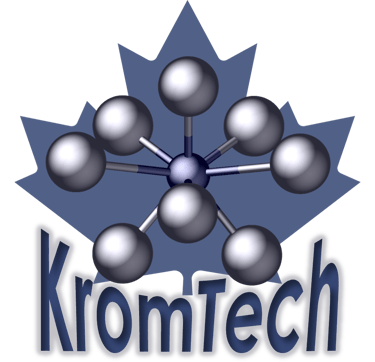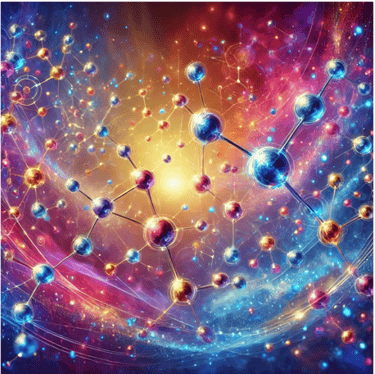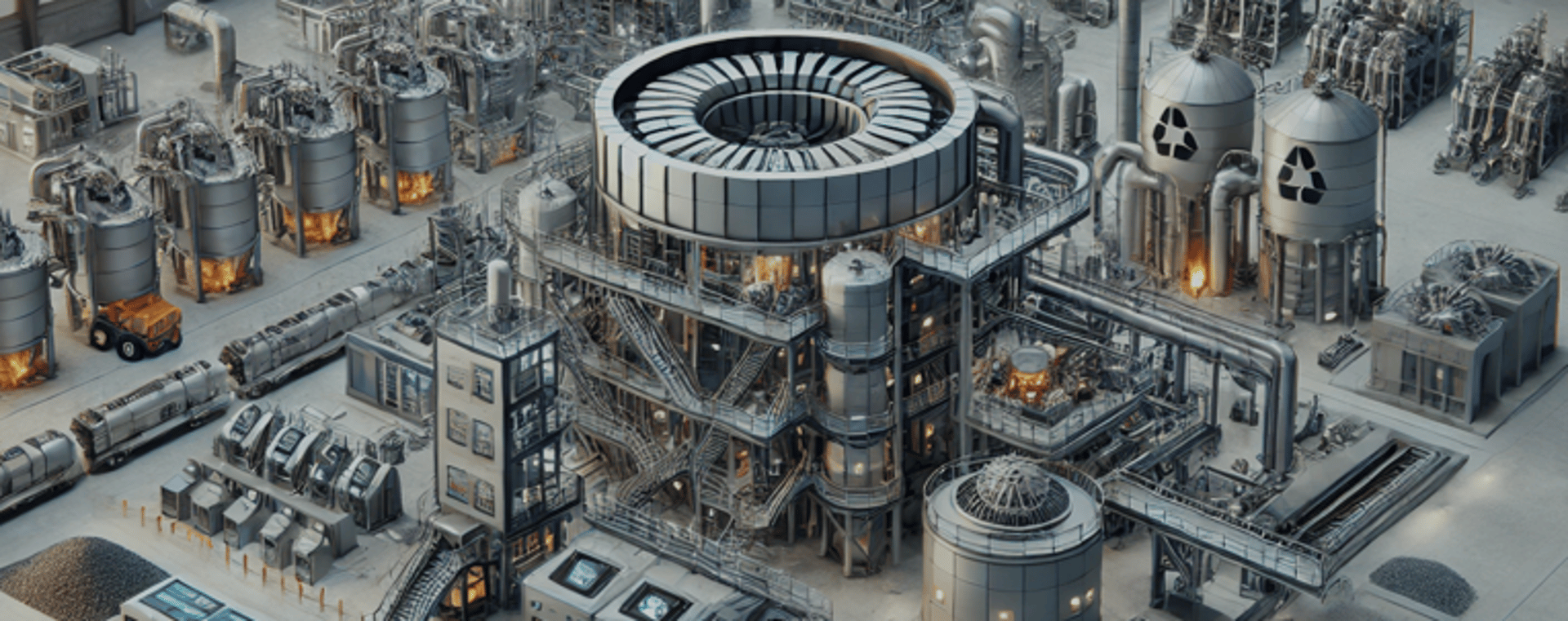
Conceptual Rotary Hearth Furnace
A multi-physics-optimized reactor delivering uniform heat transfer and complete metallization at scale
Overview
Rotary Hearth Furnace (RHF) forms the core of KromTech’s Direct Reduction Process. Using advanced Computational Fluid Dynamics (CFD) and thermal modelling, we optimized geometry, gas flow and temperature profiles to achieve maximum conversion efficiency with minimal energy loss.
Simulation & Results
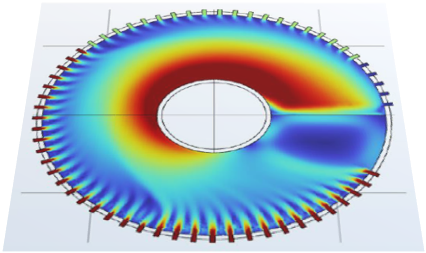

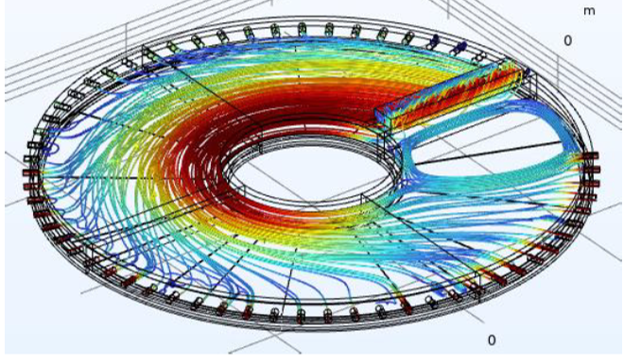

0D and 1D kinetic models, and 3D multi-physics reactor models were developed to help with simulating boundary and reduction conditions influencing the degree of metallization at industrial-scale rotary hearth furnaces.
The model takes into consideration carbothermic reactions and heat transfer by convection, conduction, and radiation, coupled with the phenomena of turbulent flow of gases from the burners within the furnace freeboard, governing the physics involved in the operation of the furnace.
The model enables assessment of energy and global mass balance, and evaluation of various rotary hearth furnace conditions on the reduction efficiency of chromite and comparison of different operating scenarios.
Gas velocity, heat transfer and reduction kinetics simulated.
Achieved full metallization in modelling for 5 pellet layers.
Gases velocity (m/s) distribution in the furnace freeboard
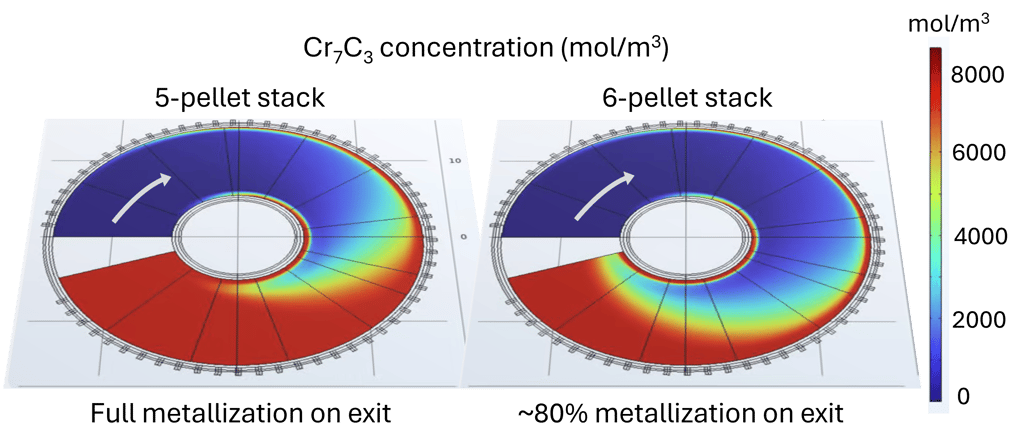

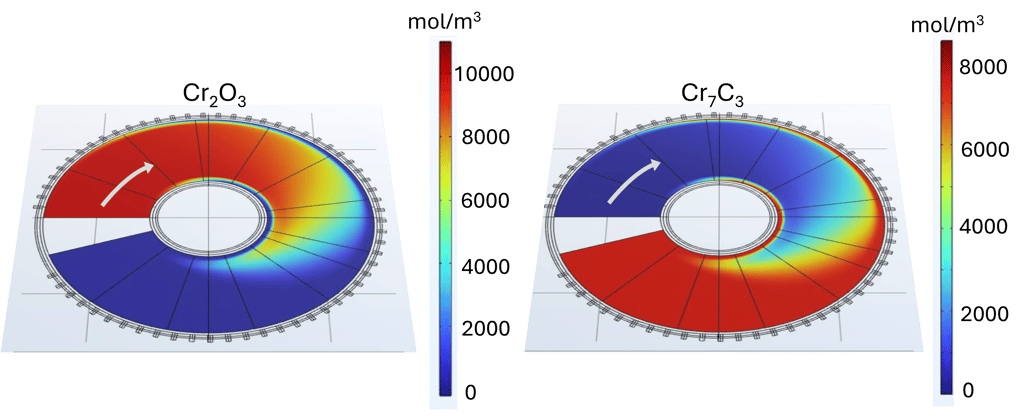

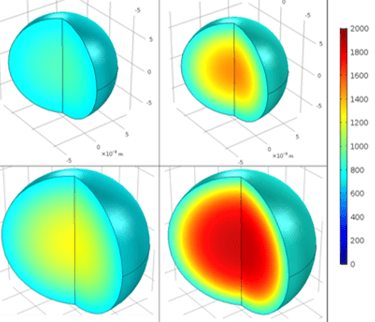

Chromium metallization profiles as Cr2O3 and Cr7C3 (alloy) concentrations as viewed on the lowermost pellet bed
Cr7C3 (alloy) concentrations with 5 and 6 pellet layers
Concentration of Cr2O3 in a single pellet measuring 15 mm (top) and 25 mm (bottom) with effective thermal conductivities of 0.1 (right) and 0.5 W/(m K) (left)
Industrial Readiness
The reactor design is scalable and supports rapid deployment at mine sites or steel plants.
Modular construction reduces footprint and capital barriers while enabling regional value addition.
